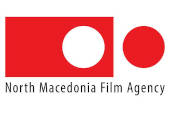Following the resignation of Niksa Svilicic and the appointment of Hrvoje Hribar as acting director of the Croatian Audiovisual Centre (HAVC www.havc.hr), the fund will open a tender for a new director who will be faced with a number of tasks, most importantly strengthening the production of feature-length film.
The director of the 57th Festival Pula Film Festival (www.pulafilmfestival.hr) Zlatko Vidackovic told FNE that two films have been shot with public funds (Lea and Darija by Branko Ivanda and Kotlovina by Tomislav Radic, both on 35mm) and three independent films (What Really Matters, a romantic omnibus by seven young directors from the Academy of Dramatic Art based on the script by Filip Peruzovic, Bella bjondina by late Danijel Marusic and the first Croatian 3D film Smash, a teenage romantic comedy by Tomislav Miksic, all three on HD), and there are as many as 18 projects in preproduction that received support from HAVC.
FNE: Why are so many projects awaiting production even though in 2009 no support for feature-length films was awarded?
ZV: There are a few reasons for this. The first is that with the establishment of the HAVC the agreement between the Ministry of Culture and the Croatian Radiotelevision (an excellent agreement for Croatian film industry) about additional funding to each film approved was ended. Under this agreement each approved film received from 150,000 to 300,000 euros in money and services. For decades Croatian film had two parents that supported it: the Ministry of Culture (www.min-kulture.hr) and Croatian Radiotelevision (HRT www.hrt.hr ). This successful marriage has been dissolved by law and now HAVC (www.havc.hr) has custody over the children (its Board of Directors is appointed and mostly financed by the Ministry) and HRT pays the alimony. Under the new law HRT gives funds to HAVC (with delay) and instead of increasing funding to specific films, HAVC decreased them.
This bring us to the second reason: in the HAVC support scheme in 2008, led by then director Albert Kapovic, lesser amounts were granted to individual films and these amounts proved to be insufficient, particularly in the case of debutant films. This was followed by the recession that decreased possibilities for sponsorship. Finally, since 2010 the City of Zagreb (www.zagreb.hr) ceased to support feature-length films. Total funding provided to feature-length films were literally cut in half in just a few years
What are the 18 films in the preproduction phase and what is their status?
The films that took part in the support scheme that had a call at the end of 2009 and was closed in 2010 got the best deal (they were granted arround between 600,000 and 640,000 euros): Flower Square by Krsto Papic, Halima's Path by Arsen Ostojic, Peaceful People by Ognjen Svilicic, The Bridge at the End of the World by Branko Istvancic, Defence and Protection by Bobo Jelcic; while two debutant films each received 390,000 euros: Sonja and a Bull by Vlatka Vorkapic and Pig Farmers by Ivan Livakovic. The films from the 2008 competition awaiting production are: Fashion Tension by Filip Sovagovic (370,000 euros) and seven debutants: Translator by Biljana Veselic, The Shot by Robert Orhel, Koko and the Ghosts by Danijel Kusan, Vidovgrad by Pavlicic, Milic and Rukavina, Children of the Fall by Mladen Dizdar, The Embrace of a Night Ship by Igor Mirković and The Other by Ivona Juka (from 250,000 to 305,000 euros).
The film remaining from the 2007 competition of the Ministry of Culture is The Man Swallowed by the Sea by Hrvoje Hribar (444,000 euros) and from the 2006 competition comes the children's film The Little Gipsy Witch by Tomislav Zaja (277,000 euros) and Caruso by Lordan Zafranovic (208,000).
FNE: What measurements are proposed to intensify Croatian film production?
LV: According to a public appeal made by the artistic director of Pula Film Festival, the Croatian Radiotelevision must do more than just fill the budget of the Croatian Audiovisual Centre. In other words, the Centre must find a way to renew the partnership that has successfully supported Croatian film industry for a long time. The production capacities and resources of Croatian public television outmatch all other producers in Croatia. Furthermore, additional support should be provided to debutants whose films got support at previous support scheme calls but received too little funding to complete the projects.
Finally, additional support should be provided to independent projects (films shot with private funds) by amending the support scheme system and launching a special support scheme for postproduction that would, just like that for minority co-productions, be open during the whole year. If these three measures were taken, Croatian film production could move ahead at full throttle.



















